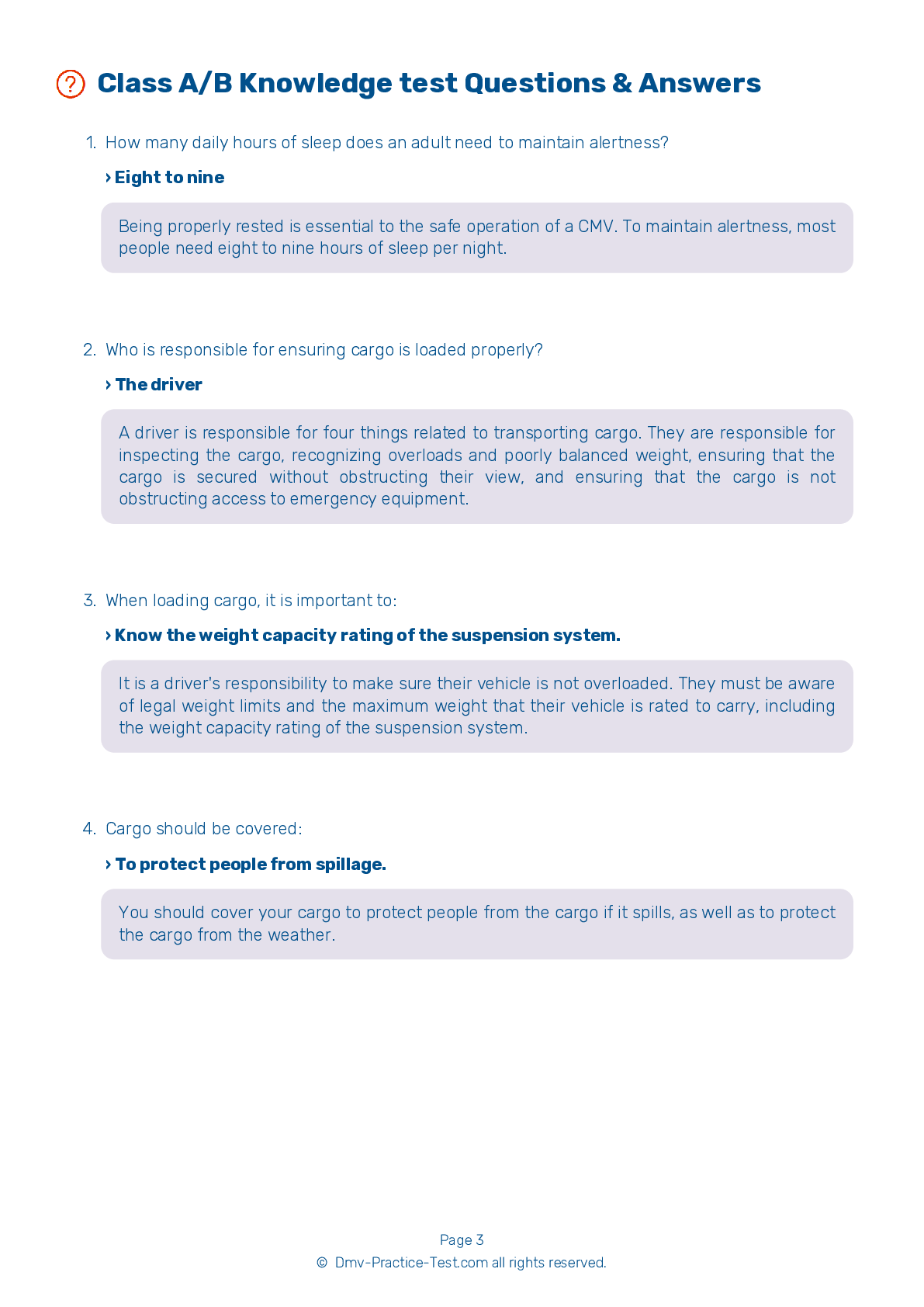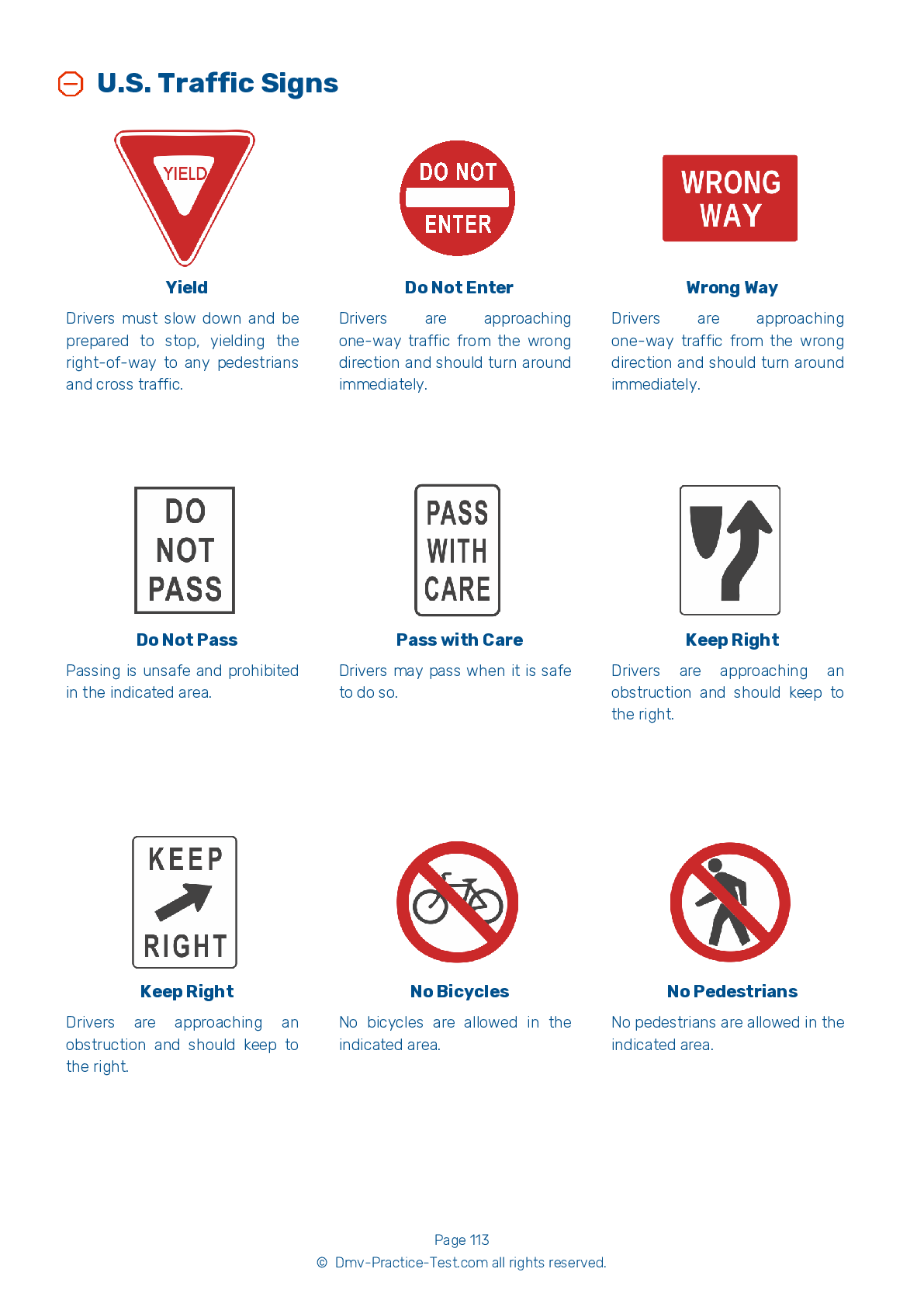Class A Driving Test | Vermont 2025 #2 Page 5 of 7
Train for FREE online with our Vermont class A license test. The official exam test consists of several obligatory parts, with all of them checking your knowledge of different blocks of road rules. If you need to obtain a VT CDL class A permit in 2025, practice as much as possible. Free sample tests published on our website will help you check and improve your knowledge and boost your grades. Please bear in mind that CDL class A requirements may vary from state to state.
29 . Rust around wheel nuts may mean:
Rust around wheel nuts can indicate that the nuts are loose. If you find rust near the wheel nuts, check their tightness before beginning to drive.
30 . An applicant for a CDL must be a minimum of:
In Vermont, you must be at least 18 years old to obtain a CDL. To be licensed to operate in interstate commerce, you must be at least 21 years old.
31 . Off-ramps:
On- and off-ramps can be dangerous when driving a truck. Remember that posted speed limits for ramps may be safe for cars but too fast for trucks.
32 . The parking brake in a newer vehicle is applied by:
In newer vehicles with air brakes, the parking brake is controlled by a yellow, diamond-shaped knob. The driver should pull the knob outward to apply the parking brakes and push the knob inward to release them.
33 . While driving, you may:
While driving a CMV, reading and sending text messages is prohibited. You may not hold a cell phone to make a voice call or dial a phone by pressing more than one button.
34 . When leaving your vehicle:
Parking brakes should be used whenever you park. If necessary, chock your wheels.
35 . Dual tires should:
When inspecting a vehicle, you should verify that your dual tires do not come into contact with one another, or with any other part of the vehicle.
See the exact questions that will be on the 2025 Vermont DMV exam.
99.2% of people who use the cheat sheet pass the FIRST TIME
Lillian MCcranie explains how our CDL study guide was helpful in passing the exam and recommends it to everyone.
Cameron tells us how he purchased the CDL exam, and found it to be a useful tool which helped him pass the exam and find a job.



